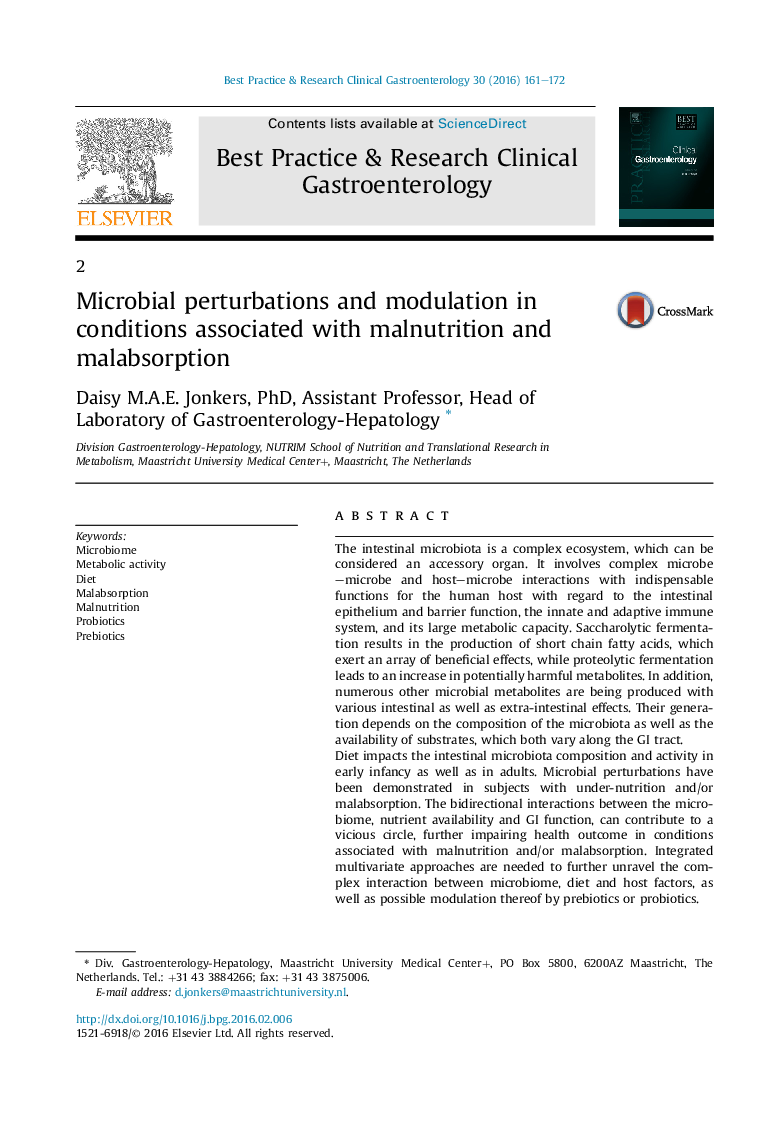| Article ID | Journal | Published Year | Pages | File Type |
|---|---|---|---|---|
| 3254121 | Best Practice & Research Clinical Gastroenterology | 2016 | 12 Pages |
The intestinal microbiota is a complex ecosystem, which can be considered an accessory organ. It involves complex microbe–microbe and host–microbe interactions with indispensable functions for the human host with regard to the intestinal epithelium and barrier function, the innate and adaptive immune system, and its large metabolic capacity. Saccharolytic fermentation results in the production of short chain fatty acids, which exert an array of beneficial effects, while proteolytic fermentation leads to an increase in potentially harmful metabolites. In addition, numerous other microbial metabolites are being produced with various intestinal as well as extra-intestinal effects. Their generation depends on the composition of the microbiota as well as the availability of substrates, which both vary along the GI tract.Diet impacts the intestinal microbiota composition and activity in early infancy as well as in adults. Microbial perturbations have been demonstrated in subjects with under-nutrition and/or malabsorption. The bidirectional interactions between the microbiome, nutrient availability and GI function, can contribute to a vicious circle, further impairing health outcome in conditions associated with malnutrition and/or malabsorption. Integrated multivariate approaches are needed to further unravel the complex interaction between microbiome, diet and host factors, as well as possible modulation thereof by prebiotics or probiotics.The present overview will briefly outline the composition and function of the intestinal microbiota, its association with nutrient intake and availability, and will address the role of the intestinal microbiota in malnutrition and malabsorption.
